Marco Hutter, a pioneer in mobile robotics, has been awarded this year’s Rössler Prize, the most highly endowed research award at ETH Zurich.
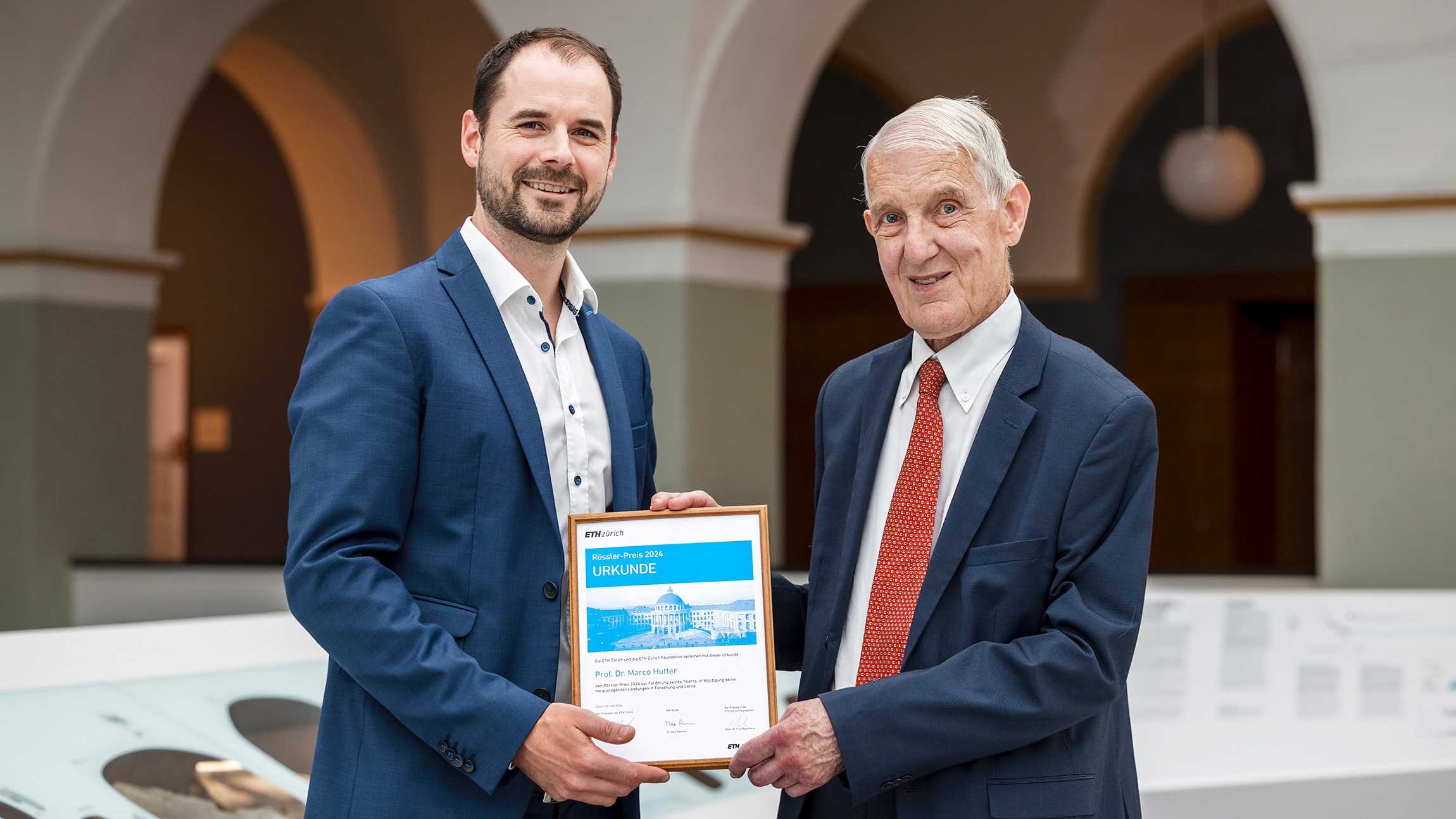
Ten years ago, they were barely able to move. Today, the autonomous walking robots developed by Marco Hutter and his team are disrupting entire fields. In the future, these highly mobile robots could assist on search and rescue missions and even explore other planets. Hutter, a professor at the ETH Zurich Department of Mechanical and Process Engineering, has been honoured for his research with this year’s Rössler Prize. “How can we build a robot that moves across terrain like a human or an animal?” was the initial question that prompted his research journey.
It quickly became clear that the robot would need to have legs, not wheels or a caterpillar drive. However, this answer raised other questions about how walking robots should look and function. “We worked on developing new drive and control concepts for the robots, which in the beginning couldn’t do anything and were far from being able to be put to any effective use,” explains Hutter.
Robots that can climb over obstacles – and more
Over the years, technologies have continuously evolved, enabling today’s robots to navigate the most difficult terrain and be used in real-life situations. Hutter names a few examples: “Today our walking robots are used commercially to carry out industrial inspections, and we are investigating new capabilities that would allow them to be used in exploration or rescue missions in completely unknown environments.”
Hutter’s team has been making use of artificial intelligence for years: Thanks to machine learning, the robots are taught to understand and interact with their environment. If a walking robot is standing in front of an obstacle, it recognises it with a camera, and an artificial neural network helps it understand what kind of obstacle it is. It then executes the movements that it successfully learned in earlier training sessions – much like an eager-to-learn dog. It is fitting, then, that these four-legged robots go by the name “ANYmal” (a combination of “anywhere” and “animal”).
Hutter’s team conducts basic research that is also useful in fields outside of legged robotics. “The technologies of environmental perception for autonomy and machine learning for control are used, for example, for machine automation of excavators and forestry equipment, in agricultural robots and for logistics tasks,” explains Hutter.
Honouring a pioneer
Hutter’s work on mobility and autonomy for AI-controlled motion robots has fundamentally changed robotics research and helped make ETH Zurich a global leader in the field. This is why he is this year's recipient of the Rössler Prize, which recognises not only his pioneering academic work – machine learning-based movement control is a revolutionary standard that was developed at ETH – but also the high level that he has achieved when it comes to technology transfer, entrepreneurship and community and project initiatives. According to ETH President Joël Mesot, Hutter has established a wide network of cooperation. “It is a great honour to receive the 2024 Rössler Prize,” says Hutter. “I met Mr Rössler over ten years ago when I was still at the beginning of my research. I never thought that I would one day receive an honour like this one.”
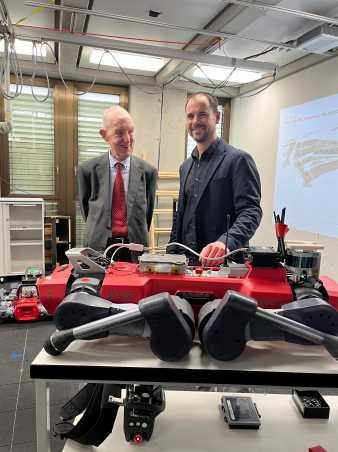 Max Rössler and Marco Hutter met for the first time 14 years ago at the ETH Foundation's Thanks Giving 2010. (Photograph: ETH Foundation)
Max Rössler and Marco Hutter met for the first time 14 years ago at the ETH Foundation's Thanks Giving 2010. (Photograph: ETH Foundation)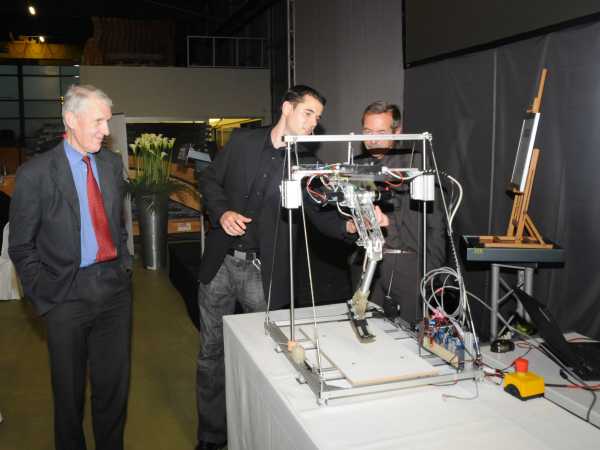
Creativity and interdisciplinary expertise
Hutter has long been interested in how machines are built and how their underlying mechanisms work. No wonder, then, that he was drawn to ETH Zurich, where he wrote his Bachelor’s thesis on microrobotics. He then followed this up with a term paper and internship dealing with control systems. He received one of the very first Excellence Scholarships from the ETH Foundation due to his outstanding performance during his Bachelor’s studies. He wrote his Master’s thesis about modelling and motion robotics under the supervision of Roland Siegwart, a professor of autonomous systems.
This gave him important skills to investigate new issues in the field of robotics. “When people ask what I do, I often answer: that it is like playing for grown-ups. I think you need to have a certain playful side to develop creative ideas. At the same time, my work is also a lot of fun,” adds Hutter. A solid grounding in theoretical foundations is indispensable, he says, be it in mathematics, control engineering or machine learning, since robotics is an interdisciplinary field. “We work together with environmental scientists, architects, geologists, construction industry experts and specialists from many other disciplines,” he says. “This makes our work very interesting. You have to be open and able to work across disciplines.”
“Marco Hutter is a well-known figure in the global research community and a person with can-do qualities.”Joël Mesot, President of ETH Zurich
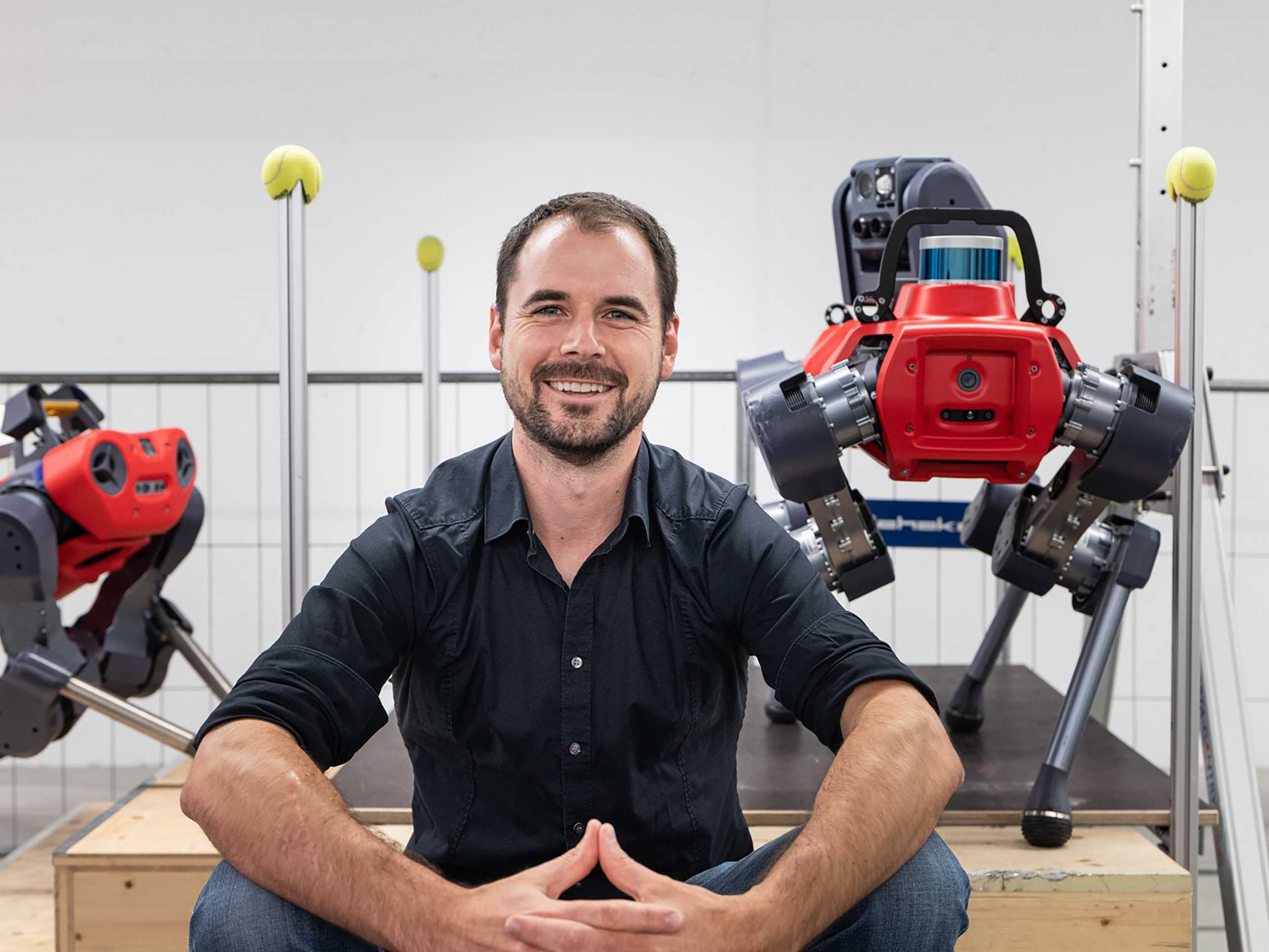
Technology transfer and entrepreneurship
Ten years ago, Hutter received a Pioneer Fellowship from the ETH Foundation and used it to found the ANYbotics start-up together with his research team. The Pioneer Fellowship helped propel walking robot technology from the research phase to a commercially viable application. Technology transfer – bringing ideas from academia into the real world – is an important element of Hutter’s work. He doesn’t limit himself to theoretical, simulation-based or conceptional research but goes beyond the proof of concept and demonstrates solutions that work in realistic scenarios. Hutter holds six patents and has fostered a strong entrepreneurial spirit within his research group, which has given rise to eight ETH spin-offs thus far.
“It's great to see that our work isn’t just important on an academic level but that it can also have a broader impact on society and the economy, especially through our start-ups.”Marco Hutter
A current example of a real-world test for the latest research in the field of mobile manipulation is this year’s Cybathlon, which will put robotic assistance systems for people with disabilities to the test. The robot in the photo below can grab an apple from a table on command and hand it to the user to eat, open doors and fetch things from mailboxes. Until now, an additional person has always been required to execute these tasks.
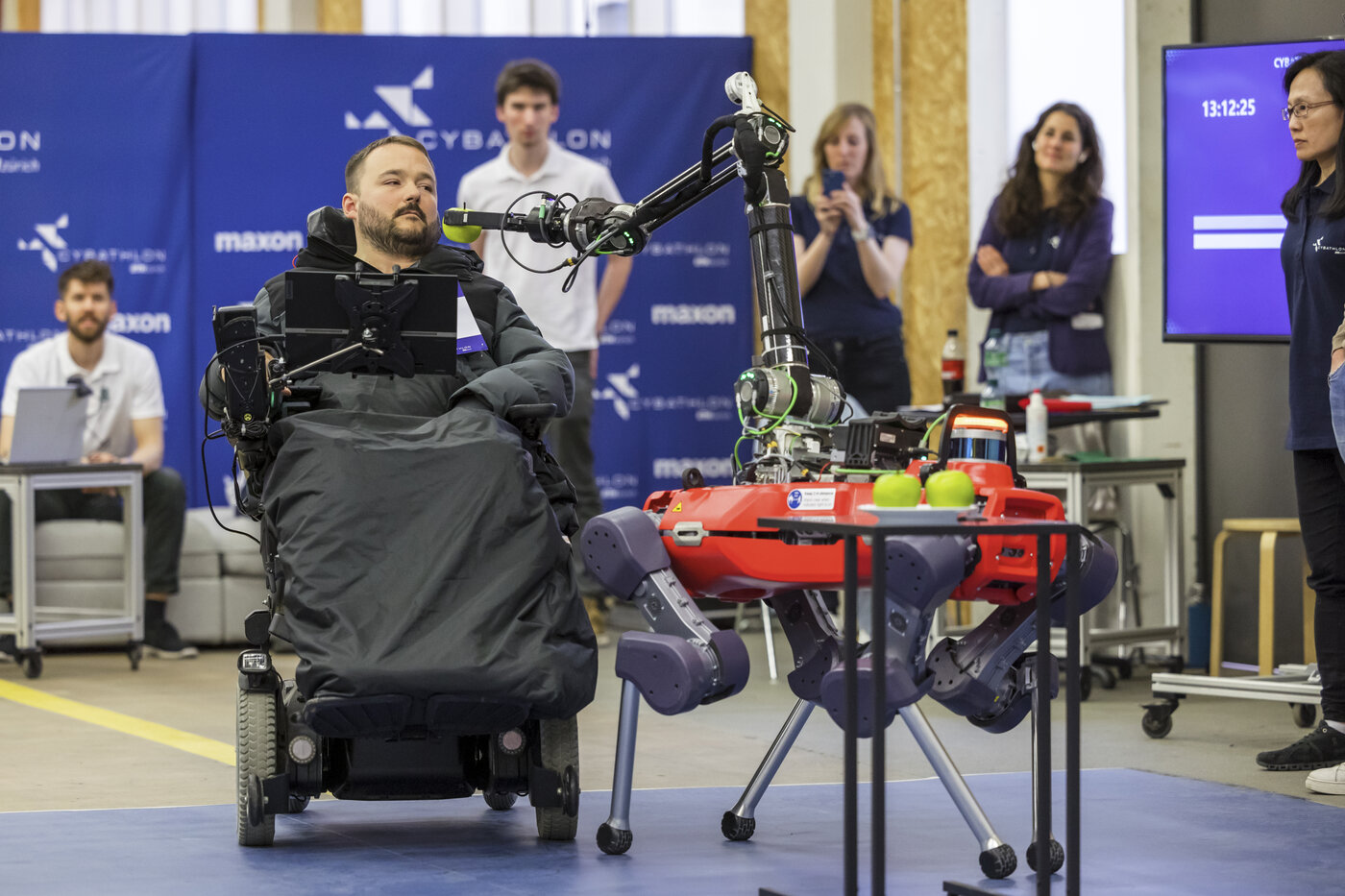
This opens up new possibilities for autonomy and self-determination for people with disabilities, and examples of this kind are growing in number. However, Hutter cautions people to manage their expectations, since these assistive systems are still very rudimentary compared to humans or animals. “That’s why it’s our objective to equip robots with an increasingly better understanding of their environment,” he says. “For example, a robot in a building needs to know what a door is and how it works, or that it’s best to go to the kitchen if you want to fetch an apple.”
From munitions clearance to Mars
Hutter and his team are hard at work developing systems for a variety of fields, many of which are too dangerous for humans – such as doing munitions clearance in Mitholz, a former ammunition depot.
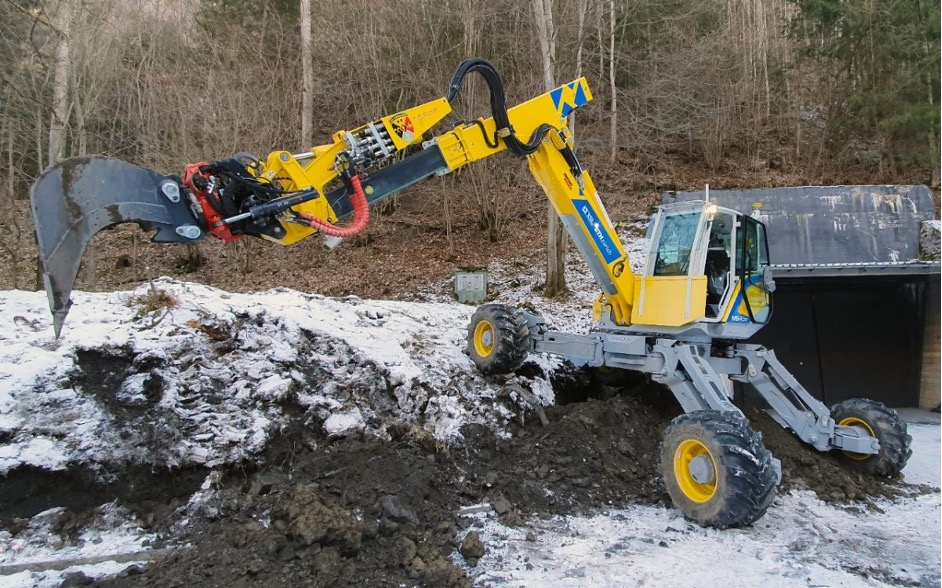
Hutter has long nurtured the desire to send ETH robots into outer space. Over the years, he has consistently demonstrated that walking robots are much better at overcoming obstacles than those powered by wheels or caterpillar drives. “Even though it’s complex, the technology is now so advanced that this type of robot can overcome these challenges,” he says. Hutter points out that it’s already possible to start thinking about new use cases for these robots – they could climb craters on Mars and the Moon, conduct exploratory missions and deliver data that we haven’t had access to until now.
The Rössler Prize
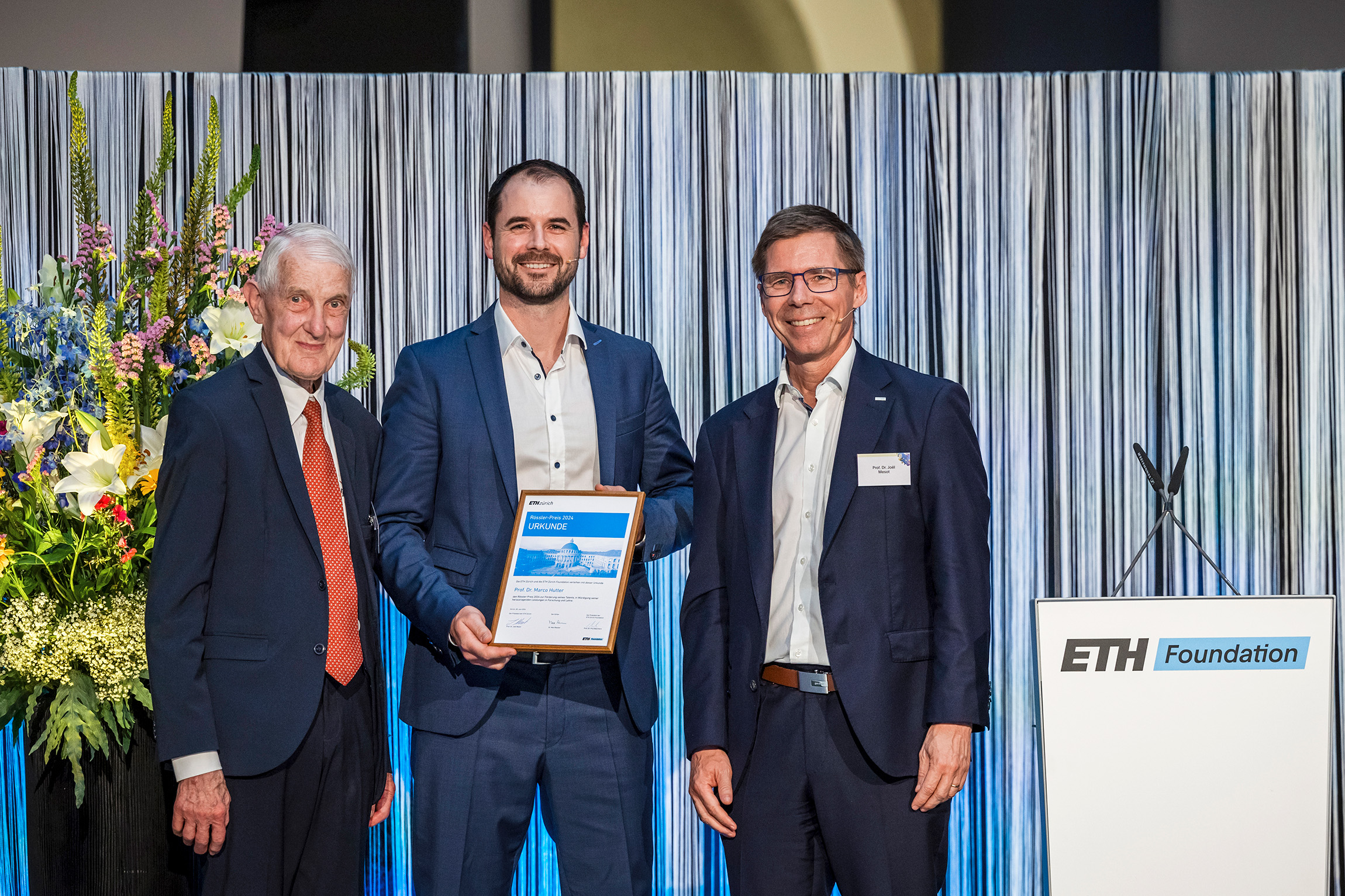
Max Rössler gifted 10 million Swiss francs to the ETH Zurich Foundation in 2008. He donates the interest from this sum in the form of an annual sponsorship award for ETH professors in the expansion phase of their research careers. The Rössler Prize is worth 200,000 Swiss francs, making it the most highly endowed research award at ETH Zurich. It is conferred annually at the ETH Foundation’s “Thanks Giving” event. Rössler studied mathematics at ETH Zurich and wrote his doctoral dissertation on orbit calculations in space travel. Following a period as a visiting researcher at Harvard University, he returned to ETH Zurich, where he was Senior Scientist and Lecturer at the Institute for Operations Research from 1967 to 1978. He later worked in wealth management before retiring from business life. He was named an Honorary Councillor by ETH Zurich in 2013.
More information about the external page Rössler Prize.